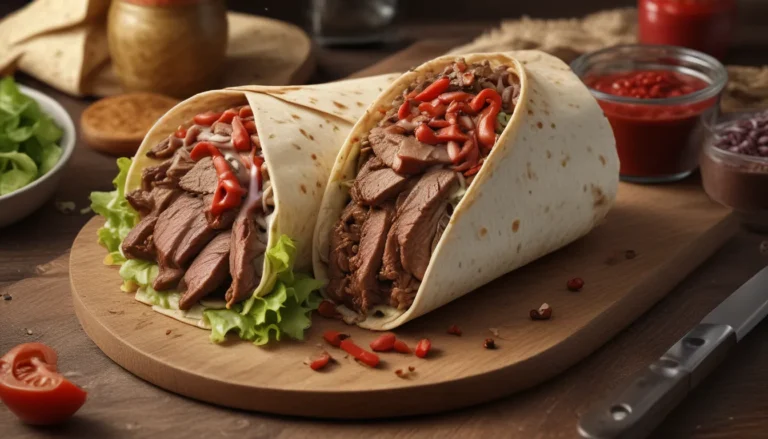The pictures in our articles might not always show exactly what the text is talking about. We use these images to make the article more interesting and eye-catching. They are there to add to the text, but not to replace it or show every detail.
Wild rice, also known as “manoomin” in the Ojibwe language, is a unique aquatic grass seed that has been a staple in the diets of Indigenous communities in North America for centuries. Unlike traditional rice, wild rice offers a nutty flavor, chewy texture, and numerous health benefits. In this article, we will delve into 16 fascinating facts about wild rice, including its cultural significance, nutritional profile, cooking methods, and environmental impact. Let's explore the world of wild rice and uncover why it has captured the hearts and taste buds of people for generations.
Key Takeaways:
- Wild rice is an aquatic grass seed, not actual rice, that provides a gluten-free, nutrient-rich alternative to traditional grains.
- It is a staple in Native American diets, offers a delicious nutty flavor, chewy texture, and can be stored frozen without losing its taste or texture.
Wild Rice: A Unique Grain
Wild rice is not technically rice; it is an aquatic grass seed predominantly harvested in North America. This nutritious seed is a versatile and flavorful ingredient that has been a vital part of Native American diets for centuries.
A Cultural Staple
For Native American tribes, wild rice isn't just a food source; it holds deep cultural and spiritual significance. It's often used in ceremonies and celebrations, reflecting the rich heritage associated with this unique grain.
Minnesota: The Hub of Wild Rice
Minnesota holds the title of the wild rice capital of the United States. The state's lakes and rivers provide the ideal conditions for the growth of wild rice, making it a prominent part of the region's culinary and cultural landscape.
Nutrient-Rich Profile
Wild rice is a nutritional powerhouse, packed with protein, fiber, B vitamins, and essential minerals like magnesium, phosphorus, and zinc. Its wholesome goodness makes it a valuable addition to any diet.
Versatility in the Kitchen
Wild rice offers endless culinary possibilities. Whether added to salads, soups, stir-fries, or desserts, its nutty flavor and chewy texture bring a delightful twist to a variety of dishes.
Environmental Stewardship
Wild rice plays a crucial role in water ecosystems. Its extensive root system helps improve water quality by filtering excess nutrients and pollutants, making it an environmentally friendly crop.
Traditional Harvesting Techniques
Native American tribes have perfected traditional techniques for harvesting wild rice, including parching and winnowing. These methods help remove the bitter outer husk and enhance the grain's flavor.
Sustainable Farming Practices
Wild rice is considered a sustainable crop, growing naturally in wetlands without the need for extensive irrigation or chemical inputs. Its cultivation showcases a harmonious relationship between agriculture and nature.
Freezing for Convenience
Wild rice can be conveniently stored frozen for up to a year without compromising its taste or texture. This makes it a convenient ingredient to have on hand for quick and healthy meal preparations.
Culinary Delights
From pilafs to stuffing and even sushi, wild rice offers a wide array of culinary possibilities. Its distinct flavor and texture make it a favorite among chefs and home cooks seeking to elevate their dishes.
Wild rice's cultural significance, nutritional benefits, and culinary versatility make it a standout ingredient in the realm of healthy and delicious eating. Whether you're looking for a gluten-free option or simply want to explore new flavors, wild rice is a fantastic choice to consider incorporating into your meals.
FAQs:
- Is wild rice gluten-free?
-
Yes, wild rice is naturally gluten-free, making it suitable for individuals with gluten sensitivities or those following a gluten-free diet.
-
How do I cook wild rice?
-
To cook wild rice, rinse it thoroughly, then boil it in water or broth for about 45-60 minutes until tender.
-
Can I substitute wild rice for regular rice?
-
Absolutely! Wild rice can be used as a substitute for regular rice, adding a unique flavor and texture to dishes.
-
Is wild rice high in protein?
-
Yes, wild rice is a good source of protein, making it a valuable addition to a balanced diet.
-
Where can I buy wild rice?
-
Wild rice is commonly found in the grains or rice section of grocery stores and is also available online.
-
Can I freeze cooked wild rice?
-
Yes, you can freeze cooked wild rice for future use by storing it in an airtight container or freezer bag.
-
Does wild rice contain vitamins and minerals?
- Wild rice is rich in essential nutrients like vitamin B6, magnesium, phosphorus, and zinc, making it a nutritious choice for meals.
In conclusion, wild rice is a diverse and nutrient-packed grain that offers a wealth of benefits to those exploring its culinary wonders. Whether you seek to enhance your health, broaden your palate, or celebrate cultural traditions, wild rice is a delightful addition to any kitchen. Experiment with different recipes and savor the goodness that wild rice brings to your meals.






